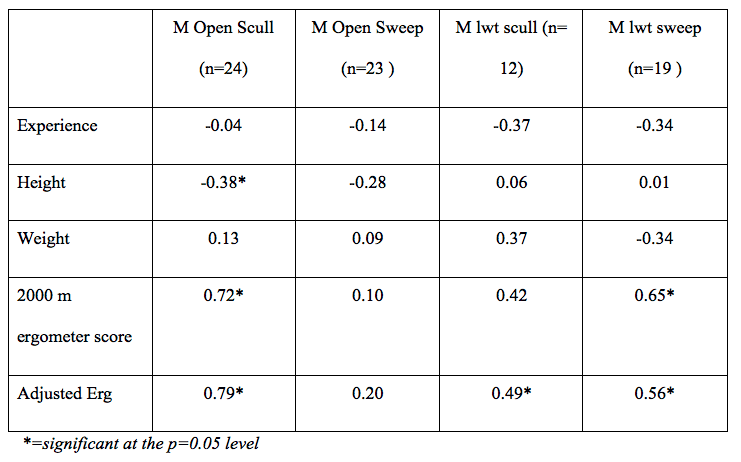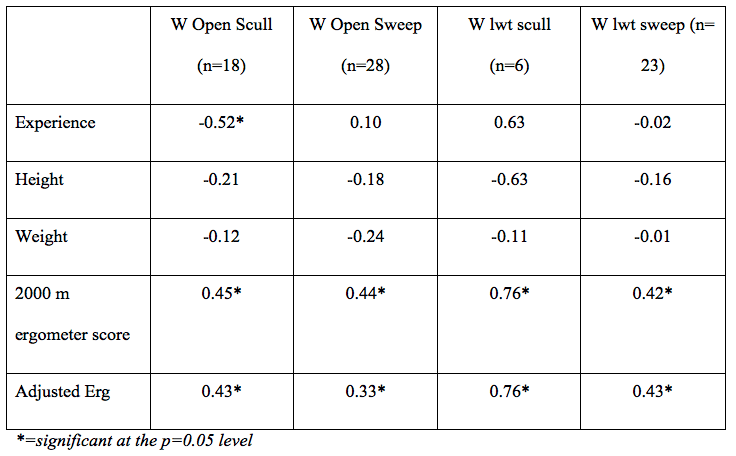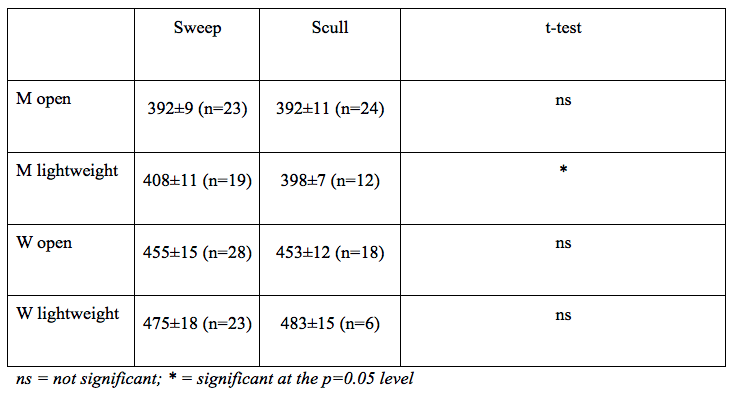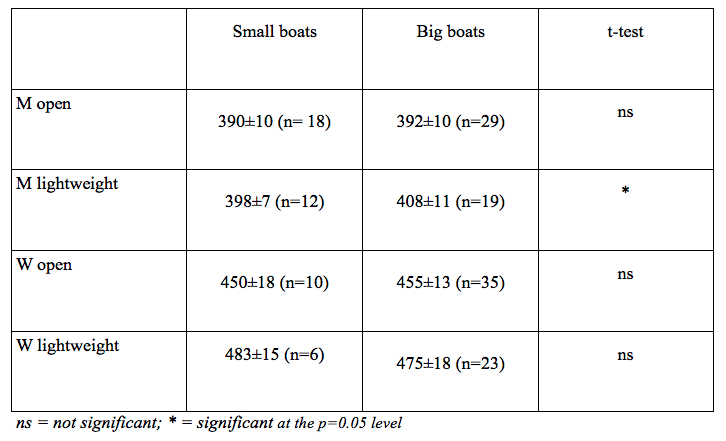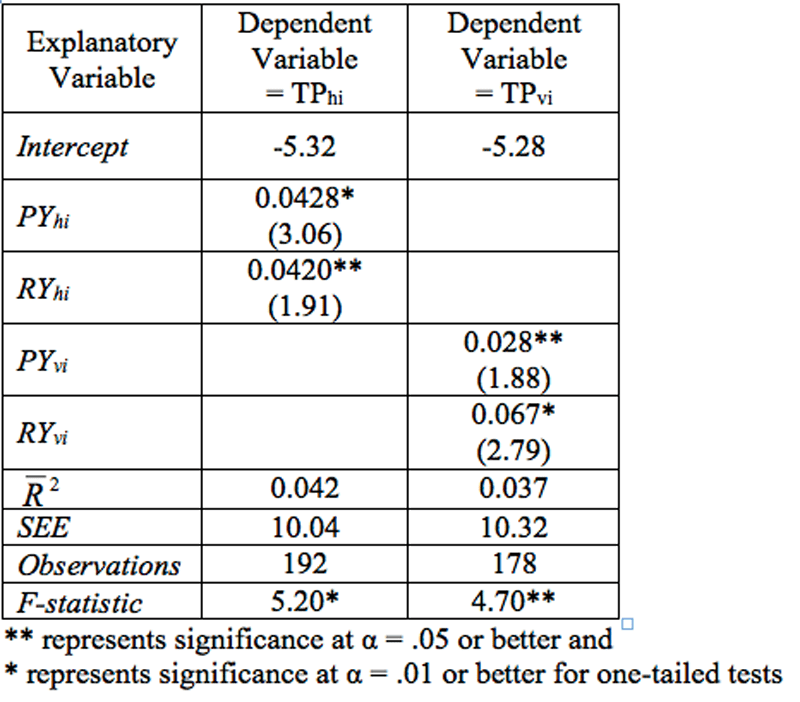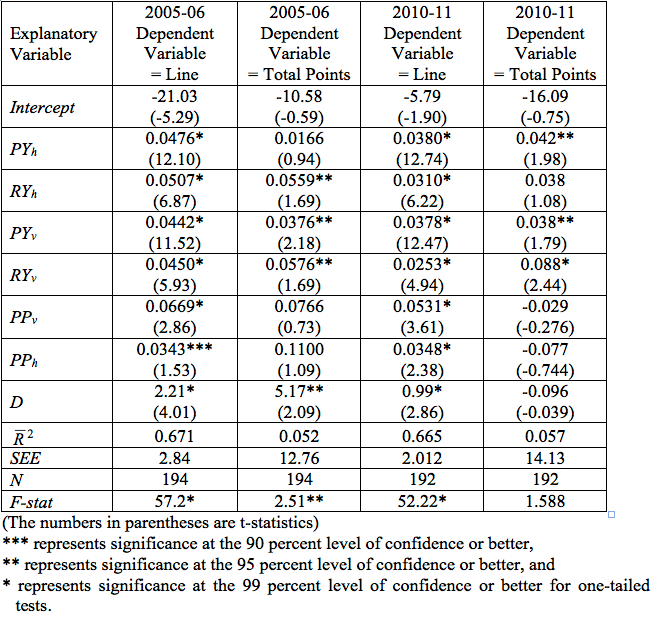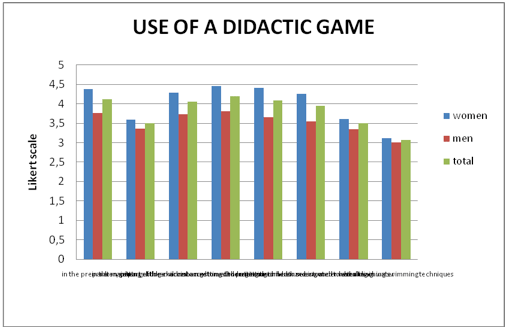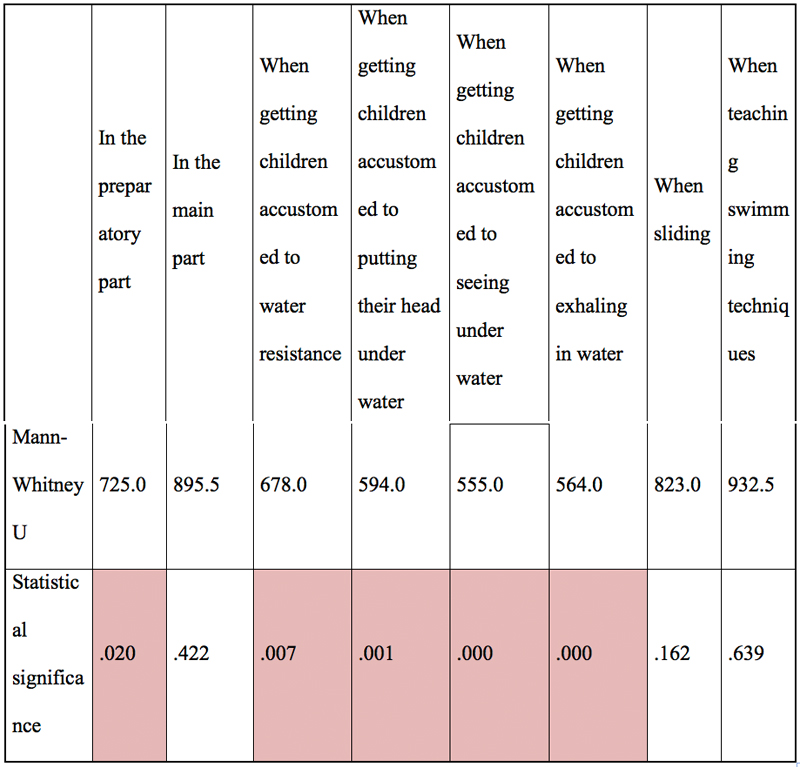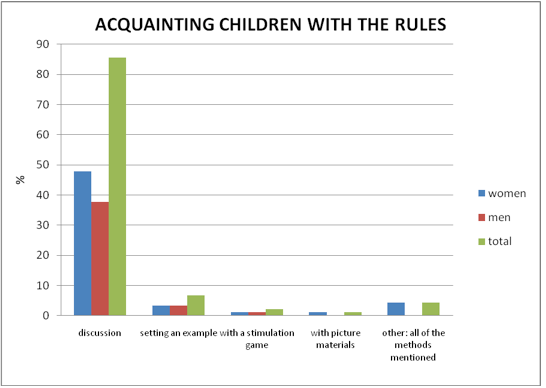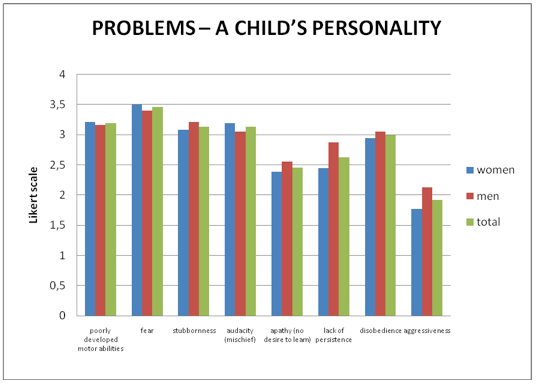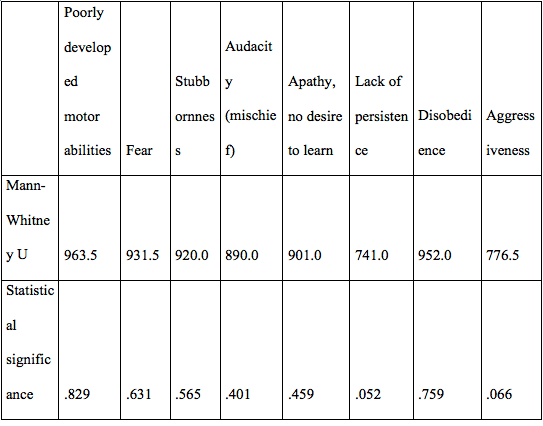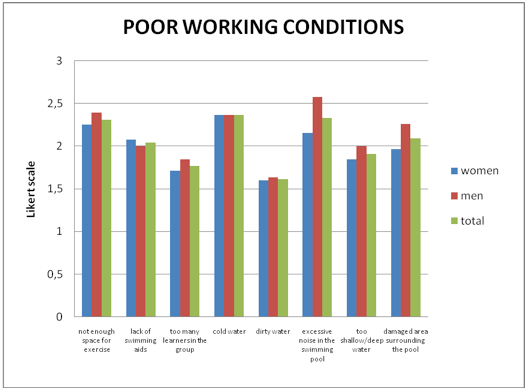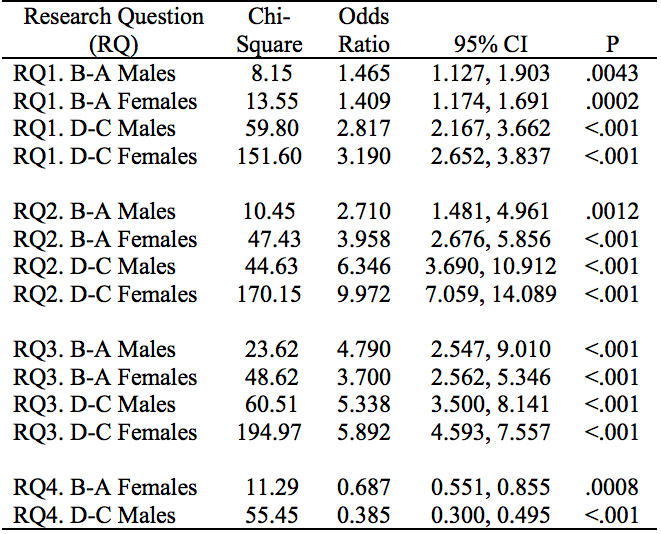Leadership and Management Skills of Junior College Athletic Directors
Submitted by Timothy Baghurst, Earl Murray Jr., Chris Jayne and Danon Carter
ABSTRACT
The current and future funding condition for junior college (JC) athletics is unclear, and an athletic program’s budget and funding is usually the responsibility of the athletic director. The purpose of this qualitative phenomenological study was to explore the lived experiences and perceptions of junior college athletic directors to understand financial and leadership issues associated with athletic programs. Sixteen athletic directors (12 male, 4 female) from the same athletic conference in the state of California were interviewed and asked 17 open-ended questions about leadership and the financial issues associated with junior college athletic programs. Three primary themes emerged including leadership, roles and responsibilities, and an unexpected third theme of the student-athlete. Findings and their application to athletic director administration are discussed.
INTRODUCTION
College athletics have become big business, and a university athletic director (AD) plays an integral role in the success of the athletic programs. Colleges and universities at all levels require the managerial skills of an AD. Although leadership and administration of athletics is a frequent focus of research at the National Collegiate Athletics Association (NCAA) level, community college (hereto forth referred to as junior college; JC) programs have received little attention. For example, NCAA Division I athletic budgets may vary widely, but substantial budgets are common (14). Thus, application of findings at this level to JC athletic programs is difficult, as JC ADs may face more responsibilities in addition to fewer funding sources and athletic staff at their disposal. Therefore, the focus of this qualitative phenomenological study was to explore the lived experiences of JC ADs in order to determine how they use their leadership to overcome financial challenges experienced by their athletic programs.
Qualities of an AD
Robertson (2008) highlights several traits and skills necessary to be a successful AD. First, he or she must have the capability of creating an environment that helps all members of the program flourish, and all members of the athletic program must have the same goal in mind. Second, an AD must exhibit the ability to take risk, solve problems, think critically, and be a decision maker. Third, they must have the fiscal savvy to promote their university/college in a way that draws fan and community support thereby generating revenue. Thus, fiscal responsibilities of athletic programs are one of the most important challenges athletic administrators deal with at all levels (20).
JC Leadership Qualities
Nahavandi (2006) defined a leader as “any person who influences individuals and groups within an organization, helps them in the establishment of goals and guides them toward achievement of those goals, thereby allowing them to be effective” (p. 4). Another definition of leadership is “the capacity to influence others by unleashing their power and potential to impact the greater good” (4). Consistent with both definitions, leadership requires the ability to influence followers and guide them toward a goal.
Athletic directors are expected to display leadership skills in overseeing the day-to-day operations of the athletic department, but leadership is also necessary to manage the budget and financials of the program (13). There are several qualities of effective leadership as well as factors that impact the effectiveness of leadership. Effective leadership is defined by the effect on followers. Key traits of effective leaders as described by Kirkpatrick and Locke (1991) include drive, integrity, intelligence, motivation to lead, and knowledge of the business. Overall, leadership success is defined by the effectiveness of leaders to influence followers in every relevant aspect.
Junior college ADs must possess certain leadership qualities or characteristics to be successful. These characteristics include ethics or strong moral values, competence, self-confidence, and a desire to influence (28). Followers must trust the decisions and behaviors of ADs as well as believe in the direction being led. Leadership styles most attributed to ADs are transformational and situational leadership, as these styles incorporates change management, practicality, and flexibility as well as the success these leadership styles have on influencing others.
JC Athletic Finances
The funding for state colleges are being reduced across the country; and this is causing economic instability within many JC athletic programs (34). Junior college ADs are faced with difficult decisions when it comes to their athletic programs, which primarily revolve around the sustainability of the program. In many cases, there is outside pressure to add athletic teams to their program, while in others situations, ADs have to decide to keep a team or cut it from their program to save money (36). In 2009, Mississippi Governor Haley Barbour addressed the state’s JC ADs to explain that they needed to scale back the number of athletic teams that they offered, or the schools would have to drop athletics altogether (34).
Leadership is a key to any successful company, and sports administration is no different. However, how an AD may use his or her acquired leadership techniques to maintain and allow an athletic department to flourish under his or her guidance is unclear. This is particularly true at the JC level, where research is limited. Although there are similarities between the roles and responsibilities of ADs at JC compared with larger four-year universities, there are also differences. According to Lewis & Quarterman (2006), the three most important decisions and choices ADs make for managing and leading JC athletic programs are the enjoyment of athletics, the athletic environment, and a desire to learn more about the sports business. ADs from large universities have a greater focus on fiscal management where much of their time is focused on management, leadership, finance, marketing, ethics, legalities, and governance (2). This is not to say that JC ADs ignore ethical or legal issues, for example, but it is not considered their priority.
Although there are large financial deviations within NCAA Division I athletic programs, (14; 37), only a few operate profitably (10). Thus, the university is placed with a financial burden of justifying the existence of a program, and many DI ADs must turn to donors to gain the fiscal capital needed to balance their athletic budgets (35). For example, in the summer of 2012, facing a $4 million deficit, Maryland University decided to eliminate seven competitive athletic teams (17). Similarly, other prominent universities have taken drastic measures to ensure the survival of their athletic programs as a whole: University of California-Berkley had to cut five teams in 2010 and Rutgers University was forced to drop six competitive athletic teams in 2007 (3).
Unfortunately for ADs at the JC level, the financial situation is even bleaker. Most junior colleges lack the same opportunities. Fewer boosters are available and revenue generated at events is lower. Sustainability is a larger concern because of many educational cuts in state funding (Steinback, 2010). Success at the National Junior College Athletic Association (NJCAA) level does not always equal financial gain or even a program the next year. For example, in 2009 Minneapolis Community and Technical College lost only its second game of the year in the NJCAA DIII national championship game only to have the athletic department shut down completely shortly after. In order to continue to have an athletic program, some institutions have been required to cut the football program; although it is the biggest revenue provider, it is also the most expensive (34).
Study Purpose
The roles and responsibilities of an NCAA AD are well-documented, but less so are those of a JC AD, particularly as they pertain to leadership and financial skills. The current and future funding condition for JC athletics is unclear (6). A better understanding of the skills and qualities necessary for success could be vital as JCs search for their next AD. Therefore, the purpose of this study was to explore the perceived leadership and financial skills of 16 JC ADs to better understand how leadership and financial skills in athletic programs might contribute to success. The qualitative, phenomenological study consisted of semi-structured interviews and asked ADs not only what it was like to serve in that capacity, but also to explain, (1) the relationship between ADs’ perceptions about leadership and funding JC athletic programs, and (2) the relationship between ADs’ perceived leadership skills and financing JC athletic programs. It was intended that ADs explain in general how they perceive leadership and how it is relevant in managing programs. Then, participants were asked to detail their perceived leadership skills to manage programs effectively.
METHOD
Participants
Participants were 16 ADs (12 male, 4 female) from JCs in California who were purposefully selected because they were knowledgeable about athletic programs and financing (11). Participants’ experience ranged between 10 and 21 years (see Table 1). Currently employed ADs were used to provide real-time feedback as opposed to retroactive data.
Procedures
Following university IRB approval, 20 ADs currently employed at a JC within the same athletic conference were mailed a letter to request an interview. From the 20 requests, three participants returned the letter agreeing to participate. The remaining 17 participants were contacted by telephone from which a further 13 agreed to participate.
Prior to each interview participants were asked to sign a consent form. All face-to- face interviews lasted between 25 and 50 minutes and were conducted within a one-month period. The interviews were conducted at a neutral site of the participant’s choosing. A mini cassette recorder was used to record all interviews in their entirety. All interviews were manually transcribed by the researcher using audacity-recording software. Following transcription, each participant was sent his or her transcript to confirm its accuracy.
Instruments
In qualitative research, the researcher is the primary instrument by exploring the phenomenon under study (7). Open-ended questions navigate and focus descriptions of a particular experience through intuition and reflection of that experience. A phenomenological study requires the interviewer to achieve, or attempt to achieve, a state of epoche, the elimination of suppositions and placement of knowledge above every possible doubt (24). Thus, the primary researcher made every effort to suppress any predisposed opinions or presumptions during this study regarding the phenomenon. This allowed the researcher to grasp and freshly comprehend the participants’ experiences with the phenomenon (12).
A face-to-face interview technique with open-ended questions was the most appropriate data collection method as it allowed for some deviation while simultaneously ensuring consistent structure across interviews (12). The semi-structured, open-ended questioning interview process was designed to direct the participant toward his or her lived experiences (27).
NVivo9™ software, in accordance with the modified van Kaam data analysis method, was used to analyze interview transcripts, and identify common themes, and patterns (25). Furthermore, the software package provided a digital transcript of audio files, import, and coding of interview transcripts and aided the exploration of potential emerging themes using a step-by-step process.
Data Validity, Reliability, and Triangulation
Validity is how accurately the account represents participants’ realities of the phenomenon and their credibility (16). To establish the validity for this study, transcripts were shared with the participants to ensure that the data was accurate prior to analysis, which is an important dimension of good quality research (9). This allowed participant to edit, revise, or add information prior to data analysis, none of which did. If both validity and reliability are the goal of qualitative research, the use of triangulation to record the construction of reality is appropriate (18). Triangulation occurs when different data sources, methods of data collection, or types of data are evidence to support research data (12). In the present study, participants were sent interview transcripts and themes derived from the data to ensure its accuracy as a second data source as well as confirm thematic analysis.
Data Analysis
According to Bradley, Curry, and Devers (2007), there is no singular way to conduct qualitative data analysis, although there is general agreement that the process is ongoing. An important first step is to immerse and comprehend the meaning (5). A modification of the van Kaam method of analysis for phenomenological data, which occurs through a multi-step process, was employed in the present study (24). This method identifies common themes and patterns used by participants in a qualitative research study.
The first step requires data to be organized, transcribed, and coded. Organization of data is critical in qualitative research because of the large amount of information gathered during the study (12). The data was organized by material type: all interviews, all observations, and all documents. Finally, data was coded.
The next step in the modified van Kaam data analysis method requires participants’ statements to be categorized, clustered, coded, and labeled into groups (24). The common themes constituting the core elements of the lived experiences of the participants were most important. Coding is a process of making sense of the data, dividing the data into text or image segments, labeling the segments with codes, examining codes for overlap and redundancy, and collapsing these codes into broad themes (12).
RESULTS
The premise of this study was to develop an understanding about the leadership skills of ADs with a particular focus on financial expertise. A semi-structured interview process was used to develop an overall analysis of expert thinking. The analysis revealed three emerging themes: (a) leadership, (b) roles and responsibilities, and (c) student-athletes. Each theme is explained and then supported by participant quotes.
Theme One: Leadership
With respect to leadership, leadership skills, types, and supervision were considered important. Participants mentioned the skills to self-evaluate and feedback and how important it was to reflect on their own performances. Self-evaluation is necessary in addition to soliciting feedback from others who might be able to provide insight. Participant 1 said,
I think through and self-evaluate, and each year I am evaluated by the Vice President and President of the college. The evaluation process also includes coaches, the trainer, and the secretary to find out what I need to improve on and set some goals.
Participant 12 stated, “Understanding my leadership skills involves listening to feedback and asking questions about how I am doing. A good leader must be open to constructive criticism and be a good listener and respect others’ opinions.”
The leadership of ADs may also influence the success of programs. According to Participant 6,
I am a leader by example as a positive person. I am reasonable and approachable, and [I] motivate with pride. I am a leader who likes to inspire others to be better. I am successful if our programs are. I want my coaches and student-athletes to be successful. I want to get the most out of people and care about what they are doing as followers.
Furthermore, Participant 3 said that
As a transformational leader, I look at the goals and vision of the athletic department and what needs to be done for the long term. Each athletic program has different needs and I look at the short and long term goals.
Theme Two: Roles and Responsibilities
A JC AD has multiple roles and responsibilities, but balancing budgets, securing funding, and distributing it appropriately was mentioned frequently. This is supported by Participant 6 who stated that, “Overseeing the budgets is a big part of my job. We have so much money for each program. Every program has a different number of student-athletes, coaches, etc. Each budget is different.”
Athletic directors must be able to budget well for each program they oversee. This is a challenge, as they must find ways to generate revenue to keep the programs active. For example, Participant 7 referred to fundraising.
Fundraising is the best way. I do not know of a community college that does not
fundraise. Most institutions cannot provide things such as backpacks or gear. There are strict rules about what can be purchased with state or district dollars. When there is a shortfall of funds, we have to fundraise to support the programs.
Participant 16 found that securing the necessary budget for JC athletics is frequently a challenge.
Money is very tight for athletic programs at community colleges. As a staff, we must fundraise to keep the programs going. The coaches fundraise for their sport. Some fundraising activities may be charity golf tournaments, barbeques, or bake sales.
Although finances are just one component of the responsibilities of an AD, it is apparent that they are a significant concern. For example, according to Participant 14, “The budget consumes 70% of my time to ensure the programs are run effectively.”
The decisions about athletic programs are a major responsibility for ADs. Participants reported that Title IX Gender Equity was a concern when adding, removing, or maintaining a program. “Title IX gender equity and compliance is a big issue, and we have to evaluate our athletic programs when considering adding or dropping a program”, said Participant 9. Participant 15, who stated that decisions about programs were made in consideration of Title IX and gender equity, supported this. Thus, it becomes a balancing act of meeting guidelines or policies while simultaneously ensuring that there is a sufficient budget.
I try to keep all my athletic programs. I try to make sure they are maintained with enough dollars coming in to keep them going. Terminating a program is the last thing I try to do. If nothing else, adding a program is a good thing but that takes money.
(Participant 16)
In JC athletics, things can change quickly, an AD must make decisions concerning their coaching staff who are responsible for the student-athlete. Thus, a change in a staff member may directly impact the athletic program and the student-athletes. According to Participant 4,
In athletics, change happens often. I deal with change by telling my coaches about changes and we work together on making changes when the time comes. Some people resist change, but change is a reality in athletics.
It is important, therefore, for the AD to be cognizant of upcoming change, and keep the staff apprised of changes that might impact them.
My coaches must deal with change the most because they spend the most time with the student-athletes. I teach them about change, when change is going to take place, how it affect their programs, and help them with change. Some adapt to change well, and others do not. I work with them all.
(Participant 8)
Theme Three: Student-Athletes
Some ADs reported the additional responsibility of having to coach. Although an AD wants to win both as a coach and director, there is recognition of balancing athletic success with academic success. In fact, the ADs placed academics above athletics. According to Participant 16, “The student-athlete should manage time by first looking at their academic responsibilities first then sports.” This is further supported by other examples.
The balance is placing academics ahead of athletics. The student-athlete must be organized and set up time schedules. A balanced student-athlete focuses toward academics and although athletics is important, earning good grades is equally important.
(Participant 14)
Athletic directors recognize that academic success is a reflection on the future prospects of the student-athlete, but also on the JC. Transferring to a larger institution is important for many students.
A student-athlete who cares about moving on beyond a two year college will do a good job with balancing academics and athletics. Although the student-athlete can do well in a sport, the student must have a good grade point average to transfer.
(Participant 8)
Motivation plays a big role in the student-athlete performance athletically and academically. The ADs are tasked with working with coaches to assist with motivating athletes. Just as a coach is a mentor to an athlete, the AD must serve as a mentor to the coach. According to Participant 13, “The athletic director sets the stage for the coaches to motivate the student-athletes.”
I try to promote morale and motivation with my coaches who are the leaders for the student-athlete. The coaches are mentors who motivate and inspire the student-athlete to good. As the athletic director I train the coaches to engage the student-athlete.
(Participant 2)
Some student-athletes are less self-motivated than others and require external motivation to perform better in a sport or academics. The ability to prioritize athletics and completing coursework with passing grades can be a challenge, yet “Increasing his or her self-motivation in the classroom can lead to a successful student-athlete” (Participant 11). Participant 6 noted that athletics has a tendency to be placed ahead of academics.
The challenged student-athlete lacks self-motivation, direction, and the ability to manage their time. This type of student-athlete lacks the passion for being engaged academically to learn in the classroom. They place athletics ahead of academics, which may be why they have difficulties earning good grades in the classroom.
DISCUSSION
The purpose of this qualitative, phenomenological study was to explore ADs lived experiences and perceptions of leadership in JC athletic programs particularly in reference to finances. Interview analysis revealed three main themes of leadership, roles and responsibilities, and the student-athlete. Each theme is discussed in light of current research.
Theme One: Leadership
Athletic directors recognized the importance of leadership in influencing the behavior and actions of others. According to Smith (1997), “As leaders face greater uncertainties and changes, and compounded complexities, they strive for greater flexibility and agility” (p. 277). In the present study, ADs saw their role as leaders encompassing a variety of roles and responsibilities as evidenced in the second theme. What is most important with these varying roles and responsibilities is the opportunity to receive feedback on their performance and make the appropriate adjustments based on the feedback received. “Effective leaders learn that comprehensive systematic reviews and evaluations should include every type of resource, every competency and capacity, and every person and position that affects performance” (33). Thus, some participants acquired evaluations from superiors, such as the college president or those working for the participant such as coaches, and applied this feedback to improve their leadership styles and effectiveness. Overall, the feedback an AD receives is a measuring tool for effectiveness in their role.
Theme Two: Roles and Responsibilities
Balancing budgets and securing funding was a clear concern for the participants. Many participants indicated that they were responsible for preparing the budget. A participative budget process involves lower-level administrators and coaches who better understand the individual line items who are responsible for the athletic department’s budget than senior administrators. A top down budgeting process offers short-term budgets imposed by senior administrators more likely to be consistent with the strategic long-term goals and objectives of the athletic department (20). Thus, those ADs expected to complete budgets without the use of participative budget methodology may experience higher levels of stress (32). Participative budgeting is supported by Wickstrom (2006), as an authoritative style of leadership is not conducive to the work force of the modern era, and that to be a successful leader an AD has to be willing to listen to those they lead.
The present study further found that gender equity and the budgetary requirements that stem from Title IX was considered both a financial and leadership challenge. This is not surprising, as gender equity at JCs has been clearly documented (8). A balance needs to exist between athletic sports programs relative to women’s sports and Title IX laws (19). Some ADs are faced with the decision to cut sports programs (Steinback, 2010) and must be cognizant of their current Title IX standing so that there does not become an imbalance of participation opportunities. Thus, there remains work to be done in achieving a standard of gender equity that not only meets the intent of Title IX but fully affords the respect of dignity for female student-athletes (19). As two-year athletic programs consider new directions, the achievement of gender equity within two year athletic programs still needs to be addressed (19), which is recognized by the participants of the present study.
Theme Three: Student-Athletes
The relationship that ADs had with student-athletes was an unexpected finding. This may be in part because some ADs reported the additional responsibility of serving as a coach. The extra coaching duties may cause additional stressors because it limits the time they have to devote to the financial responsibilities of the profession (21). Participants recognized that they were responsible with the coaches for improving both student athletic and academic performance. Participants stressed the importance of academics over athletics, but this may be due to efforts by the administration to increase retention and graduation rates (29). Not only did ADs report high levels of interaction with student-athletes, they generally viewed it as part of their responsibility to motivate the student to achieve both in athletics and in the classroom. That ADs viewed this as a component of their leadership was unexpected, as this task is frequently the responsibility of a coach or even assistant (15).
Limitations and Future Research
Although the present study provides some interesting findings, they should be evaluated with respect to its limitations. First, this study was limited to current full-time ADs at JCs in the state of California, which may not translate to the experiences of ADs in other locations or athletic conferences. Second, only four participants were female. This is not uncommon (1), and future research should consider whether opinions and perceptions differ between genders. For example, impressions of Title IX may differ by gender (1), and Title IX challenges may differ between JCs and traditional four-year institutions. Third, the specific financial expertise of each participant was not assessed. Therefore, future research should consider whether financial education and training improves AD financial expertise and progress toward short, intermediate, and long term strategic goals. The recommendation may benefit both low-level and senior level administrators at the JC. In addition, future researchers should consider conducting a broader survey of the general background and experiences of ADs in JCs.
CONCLUSIONS
The success of collegiate athletic programs can depend upon the skills of their ADs (31). Thus, they must possess leadership skills across multiple disciplines. Because financial and budgetary concerns were most prevalent among the participants of the present study, future research needs to investigate the training being provided for ADs. The financing and budget process is vital in ensuring that athletic programs are successful, and an action plan is needed for current and future ADs to use as a model to understand the entire financial and budget process of funding athletics programs.
APPLICATIONS IN SPORT
Empirical research has focused primarily on the Division I AD. However, these findings suggest that JC ADs encounter a variety of challenges which have not been investigated. JC administrators need to consider the budgetary and fundraising background and expertise of applicants, which is a paramount responsibility of ADs in JC.
ACKNOWLEDGMENTS
None
REFERENCES
1. Anderson, D. J., Cheslock, J. J., & Ehrenberg, R. G. (2006). Gender equity in intercollegiate athletics: Determinants of Title IX compliance Journal of Higher Education, 77, 225-250.
2. Barr, C. A., Hums, M. A., & Masteralexis, L. P. (2009). Principles and practice of sport management (3rd ed.). Sudbury, MA: Jones and Bartlett.
3. Berkowitz, S. (2011, June 28). Rutgers athletic department needs fees, funds to stay afloat. USA Today. Retrieved from http://usatoday30.usatoday.com/sports/college/2011-06-28-rutgers-athletic-department-subsidies_n.htm
4. Blanchard, K. (2010). Leading at a higher level: Blanchard on leadership and creating high performing organizations. Upper Saddle River, NJ: BMC, Blanchard Management Corporation.
5. Bradley, E. H., Curry, L. A., & Devers, K. J. (2007). Qualitative data analysis for health services research: Developing taxonomy, themes, and theory. Health Services Research, 42, 1758-1772.
6. Byrd, L. A., & Williams, M. R. (2007). Expansion of community college athletic programs. Community College Enterprise, 13, 39-49.
7. Caldwell, L., Creswell, J., & Iwamoto, D. K. (2007). Feeling the beat: The meaning of rap music for ethnically diverse Midwestern college students: A phenomenological study. Adolescence, 42, 337-351.
8. Castaneda, C., Hardy, D. E., & Kastinas, S. G. (2008). Meeting the challenge of gender equity in community college athletics. New Directions for Community Colleges, 142, 93-105.
9. Cohen, D., J., & Crabtree, B. F. (2008). Evaluation criteria for qualitative research in health care: Controversies and recommendations. Animals of Family Medicine, 6, 331-339.
10. Cooper, C., & Weight, E. (2011). Investigating NCAA administrator values in NCAA Division I athletic departments. Journal of Issues in Intercollegiate Athletics, 4, 74-89.
11. Creswell, J. W. (1994). Research design: Qualitative and quantitative approaches (1st ed.). Thousand Oaks, CA: Sage Publications, Inc.
12. Creswell, J. W. (2005). Educational research: Planning, conducting, and evaluating quantitative and qualitative research. (2nd ed.). Upper Saddle River, NJ: Pearson.
13. Davis, D. J. (2001). An analysis of the perceived leadership styles and levels of satisfaction of selected junior college athletic directors and head coaches. United States Sports Academy. Retrieved from Proquest, UMI Dissertations Publishing, 3026212.
14. Dunn, J. M. (2013). Should the playing field be leveled? Funding inequities among Division I athletic programs. Journal of Intercollegiate Sport, 6, 44-51.
15. Fitzgerald, M. P., Nelson, B., & Sagaria, M. D. (1994). Career patterns of athletic directors: Challenging the conventional wisdom. Journal of Sport Management, 8, 14-26.
16. Ferguson, L. (2004). External validity, generalizability, and knowledge utilization. Journal of Nursing Scholarship, 36, 16-22.
17. Giannotto, M. (2012, July 2). Maryland cuts seven sports on ‘sad day’ in College Park, Washington Post. Retrieved from http://articles.washingtonpost.com/2012-07-02/sports/35486395_1_athletic-programs-track-program-athletic-director-kevin-anderson
18. Golafshani, N. (2003). Understanding reliability and validity in qualitative research. Qualitative Report, 8, 597-607.
19. Hagedorn, L. S., & Horton D., Jr. (2009). Student athletes and athletics. New Directions for Community Colleges, 147, 1-91.
20. Hodge, F., & Tanlu, L. (2009). Finances and college athletics. New Directions for Institutional Research, 140, 7-18.
21. Judge, L. W., & Judge, I. L. (2009). Understanding the occupational stress of interscholastic athletic directors. ICHPER – SD Journal of Research in Health, Physical Education, Recreation, Sport & Dance, 4, 37-44.
22. Kirkpatrick, S. A., & Locke, E. A. (1991). Leadership: Do traits matter? Executive, 5, 48-60.
23. Lewis, B. A., & Quarterman, J. (2006). Why students return for a master’s degree in sport management. College Student Journal, 40, 717-728.
24. Moustakas, C. (1994). Phenomenological research methods. Thousand Oakes, CA: Sage Publications.
25. Mukamusoni, D. (2006). Distance learning program of teachers at Kigali institute of education: An expository study. International Review of Research in Open and Distance Learning, 3, 1-10.
26. Nahavandi, A. (2006). The art and science of leadership. Upper Saddle River, NJ: Pearson. Prentice Hall.
27. Nelson, B., & Rawlings, D. (2007). Its own reward: A phenomenological study of artistic creativity. Journal of Phenomenological Psychology, 38, 217-255.
28. Northouse, P. G. (2013). Leadership: Theory and practice. Thousand Oaks, CA: SAGE.
29. Ohlson, M., & Storch, J. (2009). Student services and student athletes in community colleges. New Directions for Community Colleges, 147, 75-84.
30. Robertson, J. E. (2008). Leadership, athletic directors and mental toughness. National Junior College Athletic Association Review, 60, 2-6.
31. Ruihley, B. J., & Fall, L. T. (2009). Assessment on and off the field: Examining athletic directors’ perceptions of public relations in college athletics. International Journal of Sport Communication, 2, 398-410.
32. Ryska, T. A. (2002). Leadership styles and occupational stress among college athletic directors: The moderating effect of program goals. Journal of Psychology, 136, 1-22.
33. Smith, A. W. (1997). Leadership is a living system: Learning leaders and organizations. Human Systems Management, 16, 277-284. Retrieved from ProQuest at http://search.proquest.ezproxy.apollolibrary.com/docview201129759?
34. Steinbach, P. (2010). Economic Storm. National Junior College Athletic Association Review, 62, 4-7.
35. Wickstrom, B. D. (2006). Message to ADs: Get to know donors. National Collegiate Athletic Association News, 43, 4-24.
36. Williams, M. R., Byrd, L., & Pennington, K. (2008). Intercollegiate athletics at the community college. Community College Journal of Research and Practice, 32, 453-461.
37. Zimbalist, A. (2013). Inequality in intercollegiate athletics: Origins, trends and policies. Journal of Intercollegiate Sport, 6, 5-24.

